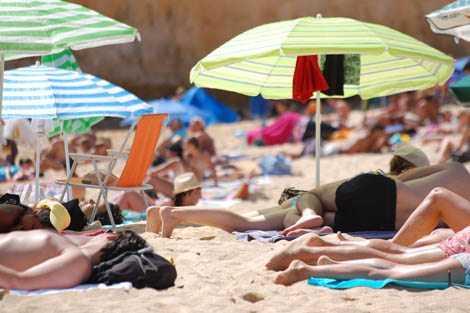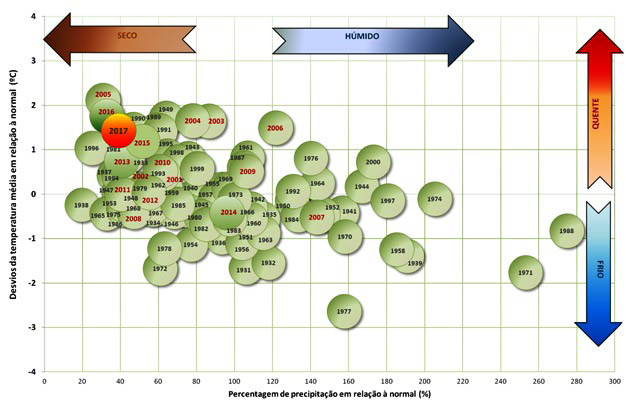 The summer of 2017 (in the months of June, July and August), in mainland Portugal, was characterized by "average air temperature values higher than the normal value" and "much lower precipitation amounts, classifying it as hot and extremely dry», announced today the Portuguese Institute of the Sea and the Atmosphere (IPMA).
The summer of 2017 (in the months of June, July and August), in mainland Portugal, was characterized by "average air temperature values higher than the normal value" and "much lower precipitation amounts, classifying it as hot and extremely dry», announced today the Portuguese Institute of the Sea and the Atmosphere (IPMA).
This was the 6th hottest summer since 2000 (and the 9th hottest since 1931) with an average temperature value of 22.70°C, that is, 1.43°C above the average value (see figure).
Since 1931, 6 of the 10 hottest summers have occurred after 2000, with summer 2005 being the hottest for 87 years.
In the summer of this year 2017, the average value of the maximum air temperature was the 3rd highest value since 1931 (30.22°C), 2.59°C above the average value.
The mean value of the minimum air temperature (15.18°C) was 0.31°C higher than normal. Higher minimum temperature values occurred in about 30% of summers.
IPMA adds that summer 2017 was also the 3rd driest since 2000 (after 2005 and 2016) and the 7th driest since 1931.
 The values of the amount of precipitation occurring in the months of June to August, about 23 mm, correspond to about 40% of the average value (see figure).
The values of the amount of precipitation occurring in the months of June to August, about 23 mm, correspond to about 40% of the average value (see figure).
The IPMA also highlights the exceptionally hot weather in June, having even been the 3rd hottest month of June since 1931.
In such a way that there was a heat wave in the period from 7th to 24th June, lasting 17/18 days in the interior North and Center regions (9 seasons) and 11/12 days in the other interior regions.
On the 17th and 18th, the previous maximum daily maximum temperature for the month of June was exceeded in almost the entire territory.
Then again there was a heat wave from 12th to 17th of July, with a duration of 6/7 days in the interior regions.
On the other hand, adds the IPMA, mainland Portugal is in a situation of «meteorological drought», which, curiously, has been decreasing throughout the territory.
Thus, in June, 80% of the territory was in severe drought (72.3%) and extreme (7.3%), in July, the value of severe drought had decreased to 79% of the territory (69.6%), but that of drought extreme had increased (9.2%). On the other hand, in August, “only” 60% of the territory was in severe (58.9%) or extreme (0.7%) drought.


















Comments